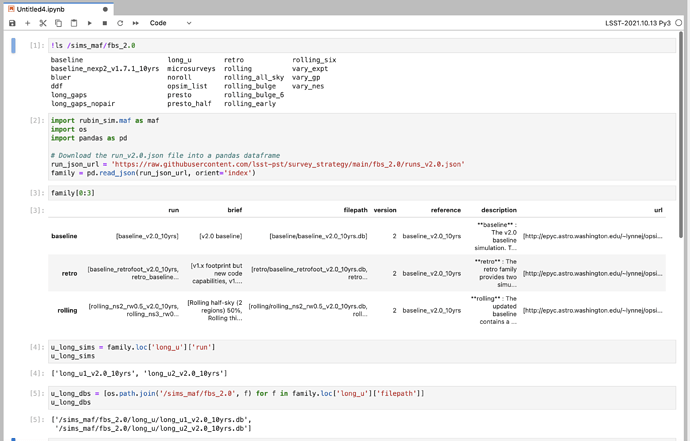I’m happy to announce the release of our v2.0 survey strategy simulations.
These simulations follow the SCOC Phase 1.0 recommendations (see PSTN-053) for an update to the previous baseline – this involves a notable update to the overall survey footprint, an expansion of the area on the sky which receives WFD-like numbers of visits (which now includes the galactic bulge and the Magellanic Clouds), and the addition of a two-region rolling cadence to the majority of the sky. This baseline survey strategy is then held as the ‘background’ against which we consider further options on survey strategy in various families. These families include:
- varying the extent of rolling cadence
- varying the exposure time in u band and the number of bluer (u and/or g) band visits
- varying the coverage of the galactic plane (non-bulge) region
- varying the coverage of the Northern Ecliptic Spur region
- varying the amount of time spent in Deep Drilling Fields
- varying the cadence of visits within a night – these variations are further divided into three families -
- adding a third visit within the night, at an interval of 1.5-4 hours (‘presto-color’)
- adding a third visit within the night, at an interval of 2-7 hours (‘long gaps’)
- separating the standard pair of visits within a night to intervals between 2-7 hours (‘long gaps no pair’)
- variable exposure time visits
- microsurveys, where additional small special projects are added to the simulation
- ToOs for GW optical counterparts
- Twilight NEO discovery visits
- Short (1-5 second) exposures over the sky
- Coordinated observing of the Roman microlensing bulge field
- Limited coverage of a northern stripe not otherwise observed, up to Dec=+30
- Extending the WFD to cover the Virgo cluster
- High cadence visits to the SMC
Each of the above families has a variety of further options. For example, the long pair separation visits include simulations where the long pair separation does not start until year 5, as well as if they start at year 1. There is also a bonus simulation where the Carina nebula is observed with a yearly micro survey.
We have a notebook - SummaryInfo_v2.0 - to walk through more details about each of these families, as well as introduce a handy json file you can use to further identify simulations (this is used to create that SummaryInfo_v2.0 notebook!).
The runs can be downloaded at either:
https://epyc.astro.washington.edu/~lynnej/opsim_downloads/fbs_2.0/
(note the tar file which can be used to download all runs at once at https://epyc.astro.washington.edu/~lynnej/opsim_downloads/fbs_2.0/opsim_v2.0.tar.gz)
or https://lsst.ncsa.illinois.edu/sim-data/sims_featureScheduler_runs2.0/
The MAF metric outputs are available here: astro-lsst-01.astro.washington.edu:8080/
and a CSV file containing the summary metric information for each of these runs is available here* [this will be updated when the remainder of the solar system metrics are completed!].
